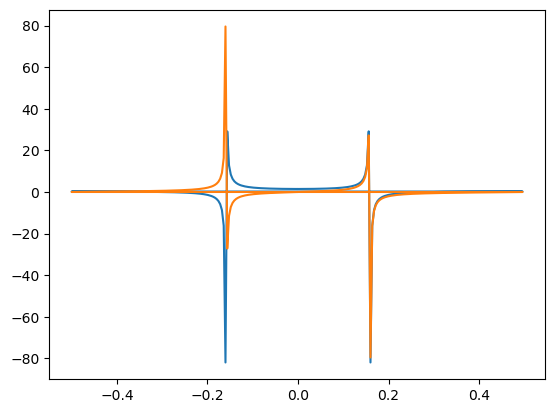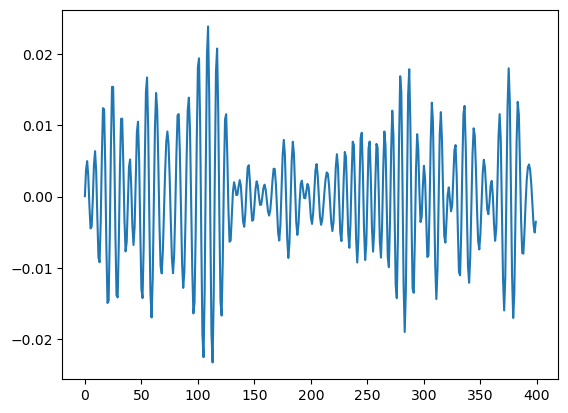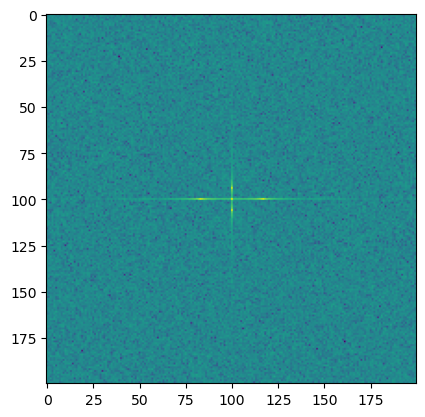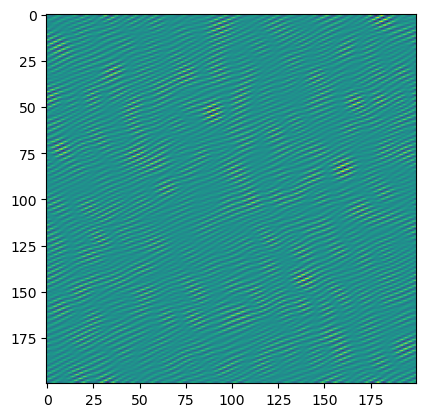!pip list | grep numpynumpy 1.23.5Benedict Thekkel
(array([1, 2, 3, 4]),
array([[1, 2],
[3, 4]]),
array([[[1, 2],
[3, 4]],
[[5, 6],
[7, 8]]]))array([[0. , 0. , 1. ],
[0.25, 0.5 , 1. ],
[1. , 1. , 1. ],
[2.25, 1.5 , 1. ],
[4. , 2. , 1. ]])array([[0.77395605, 0.43887844, 0.85859792],
[0.69736803, 0.09417735, 0.97562235]])a = [2 3 3 4 5 6] ; b = [2 3]a = [1 2 3 4] b = [2 3]array([[ 0, 1, 2, 3, 4, 5, 6],
[ 7, 8, 9, 10, 11, 12, 13],
[14, 15, 16, 17, 18, 19, 20],
[21, 22, 23, 24, 25, 26, 27],
[28, 29, 30, 31, 32, 33, 34]])array([[ 0, 1, 2, 3, 4, 5, 6],
[14, 15, 16, 17, 18, 19, 20],
[28, 29, 30, 31, 32, 33, 34]])array([[ 0, 2],
[ 9, 11]])array([[0],
[3]])array([[False, False, False, False, False, False, False],
[False, False, False, False, False, False, False],
[False, False, False, False, False, False, False],
[ True, True, True, True, True, True, True],
[ True, True, True, True, True, True, True]])array([False, True, False, True])array([[[ 0, 1, 2, 3, 4],
[ 5, 6, 7, 8, 9],
[10, 11, 12, 13, 14]],
[[15, 16, 17, 18, 19],
[20, 21, 22, 23, 24],
[25, 26, 27, 28, 29]]])array([[ 0, 1, 2, 3, 4],
[ 5, 6, 7, 8, 9],
[20, 21, 22, 23, 24],
[25, 26, 27, 28, 29]])array([[False, False, False, False, False, False, False],
[False, False, False, False, False, False, False],
[False, False, False, False, False, False, False],
[ True, True, True, True, True, True, True],
[ True, True, True, True, True, True, True]])array([[(0, [[0., 0., 0.], [0., 0., 0.], [0., 0., 0.]]),
(0, [[0., 0., 0.], [0., 0., 0.], [0., 0., 0.]])],
[(0, [[0., 0., 0.], [0., 0., 0.], [0., 0., 0.]]),
(0, [[0., 0., 0.], [0., 0., 0.], [0., 0., 0.]])]],
dtype=[('a', '<i4'), ('b', '<f8', (3, 3))])array([[28, 31, 34],
[37, 40, 43],
[46, 49, 52]])array([[[[27, 28, 29],
[30, 31, 32],
[33, 34, 35]],
[[36, 37, 38],
[39, 40, 41],
[42, 43, 44]],
[[45, 46, 47],
[48, 49, 50],
[51, 52, 53]]],
[[[27, 28, 29],
[30, 31, 32],
[33, 34, 35]],
[[36, 37, 38],
[39, 40, 41],
[42, 43, 44]],
[[45, 46, 47],
[48, 49, 50],
[51, 52, 53]]],
[[[27, 28, 29],
[30, 31, 32],
[33, 34, 35]],
[[36, 37, 38],
[39, 40, 41],
[42, 43, 44]],
[[45, 46, 47],
[48, 49, 50],
[51, 52, 53]]],
[[[27, 28, 29],
[30, 31, 32],
[33, 34, 35]],
[[36, 37, 38],
[39, 40, 41],
[42, 43, 44]],
[[45, 46, 47],
[48, 49, 50],
[51, 52, 53]]]])array([[1., 2., 3.],
[4., 5., 6.]])array([[ 1., 2., 3.],
[ 4., 5., 67.],
[890., 123., 4.]])array([[1234., 567., 89.],
[ 4., 7., 9.],
[ 4., 567., 9.]])array([['1', ' abc ', ' 2'],
['3', ' xxx', ' 4']], dtype='<U5')array([['1', 'abc', '2'],
['3', 'xxx', '4']], dtype='<U5')array([0., 1., 2., 3., 4., 5., 6., 7., 8., 9.])array([(1., 3.), (4., 6.)], dtype=[('a', '<f8'), ('c', '<f8')])The main way to control how the sequences of strings we have read from the file are converted to other types is to set the dtype argument. Acceptable values for this argument are:
a single type, such as dtype=float. The output will be 2D with the given dtype, unless a name has been associated with each column with the use of the names argument (see below). Note that dtype=float is the default for genfromtxt.
a sequence of types, such as dtype=(int, float, float).
a comma-separated string, such as dtype=“i4,f8,|U3”.
a dictionary with two keys ‘names’ and ‘formats’.
a sequence of tuples (name, type), such as dtype=[(‘A’, int), (‘B’, float)].
an existing numpy.dtype object.
the special value None. In that case, the type of the columns will be determined from the data itself (see below).
In all the cases but the first one, the output will be a 1D array with a structured dtype. This dtype has as many fields as items in the sequence. The field names are defined with the names keyword.
When dtype=None, the type of each column is determined iteratively from its data. We start by checking whether a string can be converted to a boolean (that is, if the string matches true or false in lower cases); then whether it can be converted to an integer, then to a float, then to a complex and eventually to a string.
The option dtype=None is provided for convenience. However, it is significantly slower than setting the dtype explicitly.
array([(1, 2, 3), (4, 5, 6)],
dtype=[('a', '<i8'), ('b', '<i8'), ('c', '<i8')])array([(1., 2., 3.), (4., 5., 6.)],
dtype=[('A', '<f8'), ('B', '<f8'), ('C', '<f8')])array([(1., 2., 3.), (4., 5., 6.)],
dtype=[('a', '<f8'), ('b', '<f8'), ('c', '<f8')])array([(1, 2., 3), (4, 5., 6)],
dtype=[('A', '<i8'), ('B', '<f8'), ('C', '<i8')])array([(1, 2., 3), (4, 5., 6)],
dtype=[('f0', '<i8'), ('f1', '<f8'), ('f2', '<i8')])array([(1, 2., 3), (4, 5., 6)],
dtype=[('a', '<i8'), ('f0', '<f8'), ('f1', '<i8')])array([(1., nan, 45.), (6., nan, 0.)],
dtype=[('i', '<f8'), ('p', '<f8'), ('n', '<f8')])array([(1., 0.023, 45.), (6., 0.789, 0.)],
dtype=[('i', '<f8'), ('p', '<f8'), ('n', '<f8')])array([(1., 0.023, 45.), (6., 0.789, 0.)],
dtype=[('i', '<f8'), ('p', '<f8'), ('n', '<f8')])array([[ 1., -999., 3.],
[ 4., 5., 6.]])| Numpy type | C type | Description |
|---|---|---|
| numpy.bool_ | bool | Boolean (True or False) stored as a byte |
| numpy.byte | signed char | Platform-defined |
| numpy.ubyte | unsigned char | Platform-defined |
| numpy.short | short | Platform-defined |
| numpy.ushort | unsigned short | Platform-defined |
| numpy.intc | int | Platform-defined |
| numpy.uintc | unsigned int | Platform-defined |
| numpy.int_ | long | Platform-defined |
| numpy.uint | unsigned long | Platform-defined |
| numpy.longlong | long long | Platform-defined |
| numpy.ulonglong | unsigned long long | Platform-defined |
| numpy.half / numpy.float16 | Half precision float: sign bit, 5 bits exponent, 10 bits mantissa | |
| numpy.single | float | Platform-defined single precision float: typically sign bit, 8 bits exponent, 23 bits mantissa |
| numpy.double | double | Platform-defined double precision float: typically sign bit, 11 bits exponent, 52 bits mantissa. |
| numpy.longdouble | long double | Platform-defined extended-precision float |
| numpy.csingle | float complex | Complex number, represented by two single-precision floats (real and imaginary components) |
| numpy.cdouble | double complex | Complex number, represented by two double-precision floats (real and imaginary components). |
| numpy.clongdouble | long double complex | Complex number, represented by two extended-precision floats (real and imaginary components). |
iinfo(min=-9223372036854775808, max=9223372036854775807, dtype=int64)iinfo(min=-9223372036854775808, max=9223372036854775807, dtype=int64)array([[ 1., 2., 3.],
[11., 12., 13.],
[21., 22., 23.],
[31., 32., 33.]])array([[ 1., 2., 3.],
[11., 12., 13.],
[21., 22., 23.],
[31., 32., 33.]])array([[1., 1.],
[1., 1.],
[1., 1.]])array([('Rex', 9, 81.), ('Fido', 3, 27.)],
dtype=[('name', '<U10'), ('age', '<i4'), ('weight', '<f4')])array([('Rex', 5, 81.), ('Fido', 5, 27.)],
dtype=[('name', '<U10'), ('age', '<i4'), ('weight', '<f4')])dtype([('x', '<f4'), ('y', '<f4'), ('z', '<f4', (2, 2))])dtype([('f0', 'i1', (3,)), ('f1', '<f4'), ('f2', '<f8', (2, 3))])dtype([('col1', '<i4'), ('col2', '<f4')])dtype({'names': ['col1', 'col2'], 'formats': ['<i4', '<f4'], 'offsets': [0, 4], 'itemsize': 12})offsets: [0, 1, 4, 8, 16, 24]
itemsize: 32array([(1, 2., 3.), (4, 5., 6.)],
dtype=[('f0', '<i8'), ('f1', '<f4'), ('f2', '<f8')])array([(3, 3., True, b'3'), (3, 3., True, b'3')],
dtype=[('f0', '<i8'), ('f1', '<f4'), ('f2', '?'), ('f3', 'S1')])array([(0, 0., False, b'0'), (1, 1., True, b'1')],
dtype=[('f0', '<i8'), ('f1', '<f4'), ('f2', '?'), ('f3', 'S1')])array([(0., b'0.0', b''), (0., b'0.0', b''), (0., b'0.0', b'')],
dtype=[('x', '<f4'), ('y', 'S3'), ('z', 'O')])array([(0, 0.), (0, 0.), (0, 0.)],
dtype={'names': ['a', 'c'], 'formats': ['<i4', '<f4'], 'offsets': [0, 8], 'itemsize': 12})array([0, 0, 0])array([0., 0., 0., 0., 0., 0., 0., 0., 0.], dtype=float32)array([[0., 0.],
[0., 0.],
[0., 0.]], dtype=float32)array([(2, 0, 3.), (2, 0, 3.), (2, 0, 3.)],
dtype=[('a', '<i4'), ('b', '<i4'), ('c', '<f4')])array([(1, 100.), (3, 4.)], dtype=[('foo', '<i8'), ('bar', '<f4')])array([ True, False])array([ True, False])dtype({'names': ['f0', 'f2'], 'formats': ['i1', '<i4'], 'offsets': [0, 4], 'itemsize': 9})dtype({'names': ['f0', 'f2'], 'formats': ['i1', '<i4'], 'offsets': [0, 4], 'itemsize': 12}, align=True)rec.array([(2, 3., b'World')],
dtype=[('foo', '<i4'), ('bar', '<f4'), ('baz', 'S10')])dtype((numpy.record, [('foo', '<i4'), ('bar', '<f4'), ('baz', 'S10')]))array([((2., 3),), ((5., 6),)],
dtype=[('b', [('ba', '<f8'), ('bb', '<i8')])])array([(1, (3,)), (4, (6,))], dtype=[('a', '<i8'), ('b', [('bb', '<i8')])])(masked_array(data=[(1,), (1,), (2,), (2,)],
mask=[(False,), (False,), (False,), (False,)],
fill_value=(999999,),
dtype=[('a', '<i8')]),
array([0, 1, 3, 4]))(('a', dtype('int32')), ('ba', dtype('float64')), ('bb', dtype('int32'))){'A': [],
'B': [],
'BA': ['B'],
'BB': ['B'],
'BBA': ['B', 'BB'],
'BBB': ['B', 'BB']}('A',)('a', ('b', ('ba', 'bb')))False('a', 'b', 'ba', 'bb')array([( 1, 10.), ( 2, 20.), (-1, 30.)],
dtype=[('f0', '<i8'), ('f1', '<f8')])array([( 1, 10.), ( 2, 20.), (-1, 30.)],
dtype=[('f0', '<i8'), ('f1', '<f8')])rec.array([( 1, 10.), ( 2, 20.), (-1, 30.)],
dtype=[('a', '<i8'), ('f1', '<f8')])array([(1, 10.), (2, 20.), (0, 0.)], dtype=[('A', '<i8'), ('B', '<f8')])array([(1, (2., [ 3., 30.])), (4, (5., [ 6., 60.]))],
dtype=[('A', '<i8'), ('b', [('ba', '<f8'), ('BB', '<f8', (2,))])])dtype([('f0', 'u1'), ('f1', '<i8'), ('f2', '<f8')], align=True)array([(1., 1), (1., 1), (1., 1), (1., 1)],
dtype=[('b', '<f4'), ('c', 'u1')])array([(1., 0), (1., 0), (1., 0), (1., 0)],
dtype=[('b', '<f4'), ('newf', 'u1')])masked_array(data=[(b'A', 1.0, --), (b'B', 2.0, --), (b'a', 10.0, 100.0),
(b'b', 20.0, 200.0), (b'c', 30.0, 300.0)],
mask=[(False, False, True), (False, False, True),
(False, False, False), (False, False, False),
(False, False, False)],
fill_value=(b'N/A', 1.e+20, 1.e+20),
dtype=[('A', 'S3'), ('B', '<f8'), ('C', '<f8')])array([(0, (0., 0), [0., 0.]), (0, (0., 0), [0., 0.]),
(0, (0., 0), [0., 0.]), (0, (0., 0), [0., 0.])],
dtype=[('a', '<i4'), ('b', [('f0', '<f4'), ('f1', '<u2')]), ('c', '<f4', (2,))])array([[0., 0., 0., 0., 0.],
[0., 0., 0., 0., 0.],
[0., 0., 0., 0., 0.],
[0., 0., 0., 0., 0.]])array([[ 0, 1, 2, 3, 4],
[ 5, 6, 7, 8, 9],
[10, 11, 12, 13, 14],
[15, 16, 17, 18, 19]])X ? b h i l q p B H I L Q P e f d g F D G S U V O M m
? Y Y Y Y Y Y Y Y Y Y Y Y Y Y Y Y Y Y Y Y Y Y Y Y - Y
b - Y Y Y Y Y Y - - - - - - Y Y Y Y Y Y Y Y Y Y Y - Y
h - - Y Y Y Y Y - - - - - - - Y Y Y Y Y Y Y Y Y Y - Y
i - - - Y Y Y Y - - - - - - - - Y Y - Y Y Y Y Y Y - Y
l - - - - Y Y Y - - - - - - - - Y Y - Y Y Y Y Y Y - Y
q - - - - Y Y Y - - - - - - - - Y Y - Y Y Y Y Y Y - Y
p - - - - Y Y Y - - - - - - - - Y Y - Y Y Y Y Y Y - Y
B - - Y Y Y Y Y Y Y Y Y Y Y Y Y Y Y Y Y Y Y Y Y Y - Y
H - - - Y Y Y Y - Y Y Y Y Y - Y Y Y Y Y Y Y Y Y Y - Y
I - - - - Y Y Y - - Y Y Y Y - - Y Y - Y Y Y Y Y Y - Y
L - - - - - - - - - - Y Y Y - - Y Y - Y Y Y Y Y Y - -
Q - - - - - - - - - - Y Y Y - - Y Y - Y Y Y Y Y Y - -
P - - - - - - - - - - Y Y Y - - Y Y - Y Y Y Y Y Y - -
e - - - - - - - - - - - - - Y Y Y Y Y Y Y Y Y Y Y - -
f - - - - - - - - - - - - - - Y Y Y Y Y Y Y Y Y Y - -
d - - - - - - - - - - - - - - - Y Y - Y Y Y Y Y Y - -
g - - - - - - - - - - - - - - - - Y - - Y Y Y Y Y - -
F - - - - - - - - - - - - - - - - - Y Y Y Y Y Y Y - -
D - - - - - - - - - - - - - - - - - - Y Y Y Y Y Y - -
G - - - - - - - - - - - - - - - - - - - Y Y Y Y Y - -
S - - - - - - - - - - - - - - - - - - - - Y Y Y Y - -
U - - - - - - - - - - - - - - - - - - - - - Y Y Y - -
V - - - - - - - - - - - - - - - - - - - - - - Y Y - -
O - - - - - - - - - - - - - - - - - - - - - - - Y - -
M - - - - - - - - - - - - - - - - - - - - - - Y Y Y -
m - - - - - - - - - - - - - - - - - - - - - - Y Y - Y

array([[ 50. +0.j , 0. +0.j , 0. +0.j ,
0. +0.j , 0. +0.j ],
[-12.5+17.20477401j, 0. +0.j , 0. +0.j ,
0. +0.j , 0. +0.j ],
[-12.5 +4.0614962j , 0. +0.j , 0. +0.j ,
0. +0.j , 0. +0.j ],
[-12.5 -4.0614962j , 0. +0.j , 0. +0.j ,
0. +0.j , 0. +0.j ],
[-12.5-17.20477401j, 0. +0.j , 0. +0.j ,
0. +0.j , 0. +0.j ]])array([[1.+0.j, 0.+0.j, 0.+0.j, 0.+0.j],
[0.+0.j, 0.+0.j, 0.+0.j, 1.+0.j],
[0.+0.j, 0.+0.j, 1.+0.j, 0.+0.j],
[0.+0.j, 1.+0.j, 0.+0.j, 0.+0.j]])

array([[ 50. +0.j , 0. +0.j , 0. +0.j ],
[-12.5+17.20477401j, 0. +0.j , 0. +0.j ],
[-12.5 +4.0614962j , 0. +0.j , 0. +0.j ],
[-12.5 -4.0614962j , 0. +0.j , 0. +0.j ],
[-12.5-17.20477401j, 0. +0.j , 0. +0.j ]])array([[0., 0., 0., 0., 0.],
[1., 1., 1., 1., 1.],
[2., 2., 2., 2., 2.],
[3., 3., 3., 3., 3.],
[4., 4., 4., 4., 4.]])array([[[8.+0.j, 0.+0.j],
[0.+0.j, 0.+0.j]],
[[0.+0.j, 0.+0.j],
[0.+0.j, 0.+0.j]]])array([[[4.+0.j, 0.+0.j],
[4.+0.j, 0.+0.j]],
[[0.+0.j, 0.+0.j],
[0.+0.j, 0.+0.j]]])array([[[1., 1.],
[1., 1.]],
[[1., 1.],
[1., 1.]],
[[1., 1.],
[1., 1.]]])array([15.+0.j, -4.+0.j, 0.+0.j, -1.+0.j, 0.+0.j, -4.+0.j])array([[ 0.-0.j, -0.+0.j],
[ 0.+0.j, 0.-0.j]])array([1.+0.j, 2.+0.j, 3.+0.j, 4.+0.j, 3.+0.j, 2.+0.j])array([1.-0.00000000e+00j, 2.-3.70074342e-17j, 3.-3.70074342e-17j,
4.-0.00000000e+00j])array([ 0. , 1.25, 2.5 , 3.75, -5. , -3.75, -2.5 , -1.25])array([ 0., 10., 20., 30., 40., -50., -40., -30., -20., -10.])array([[ 0., 1., 2.],
[ 3., 4., -4.],
[-3., -2., -1.]])array([[ 0., 1., 2.],
[ 3., 4., -4.],
[-3., -2., -1.]])